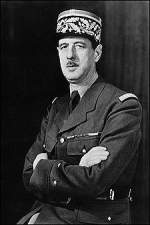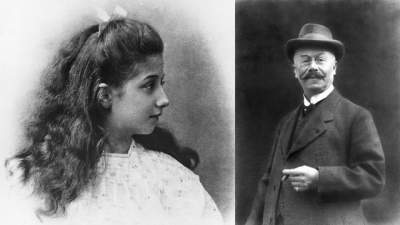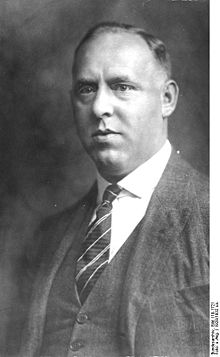
November 22
1635 Taiwan: Dutch colonial forces launch a three-month pacification campaign against Taiwanese aborigines:
Taiwan. . .officially the Republic of China (ROC). . .is a state in East Asia. Originally based in mainland China, the Republic of China now governs the island of Taiwan, which makes up over 99% of its territory, as well as Penghu, Kinmen, Matsu, and other minor islands. Neighboring states include the People's Republic of China to the west, Japan to the east and northeast, and the Philippines to the south. Taipei is the political capital as well as economic and cultural centre in Taiwan. New Taipei is the most populous city.
The island of Taiwan (formerly known as "Formosa") was mainly inhabited by Taiwanese aborigines until the Dutch settlement during the Age of Discovery in the 17th century, when ethnic Chinese began immigrating to the island. The Qing Dynasty of China later conquered Taiwan in 1683.
By the time Taiwan was ceded to Japan in 1895, the majority of Taiwan's inhabitants were Han Chinese either by ancestry or by assimilation. The Republic of China (ROC) was established in China in 1912. At the end of World War II in 1945, Japan surrendered Taiwan to ROC military forces on behalf of the Allies.
Following the Chinese civil war, the Communist Party of China took full control of mainland China and founded the People's Republic of China (PRC) in 1949. The ROC relocated its government to Taiwan, and its jurisdiction became limited to Taiwan and its surrounding islands. In 1971, the PRC assumed China's seat at the United Nations, which the ROC originally occupied. International recognition of the ROC has gradually eroded as most countries switched recognition to the PRC. Only 21 UN member states and the Holy See currently maintain formal diplomatic relations with the ROC, though it has informal ties with most other states via its representative offices. [For further information, click here]
1890 Birth: Charles De Gaulle:

De Gaulle was a French general and statesman, leader of the Free French during World War Two and the architect of the Fifth Republic. His political ideology, 'Gaullism', has become a major influence in French politics . . . . During the 1930s he wrote books and articles on military subjects, criticising France's reliance on the Maginot Line for defence against Germany and advocating the formation of mechanised armoured columns. His advice went unheeded and, in June 1940, German forces easily overran France. As under-secretary of national defence and war, de Gaulle refused to accept the French government's truce with the Germans and escaped to London, where he announced the formation of a French government in exile. He became leader of the Free French . . . .
In 1958, a revolt in French-held Algeria, combined with serious instability within France, destroyed the Fourth Republic. De Gaulle returned to lead France once more. The French people approved a new constitution and voted de Gaulle president of the Fifth Republic. Strongly nationalistic, de Gaulle sought to strengthen his country financially and militarily. He sanctioned the development of nuclear weapons, withdrew France from NATO and vetoed the entry of Britain into the Common Market. He also granted independence to Algeria in the face of strong opposition at home and from French settlers in Algeria.
1900: First Mercedes goes for a test drive:
On this day in 1900, the first car to be produced under the Mercedes name is taken for its inaugural drive in Cannstatt, Germany. The car was specially built for its buyer, Emil Jellinek, an entrepreneur with a passion for fast, flashy cars. Jellinek had commissioned the Mercedes car from the German company Daimler-Motoren-Gesellschaft: it was lighter and sleeker than any car the company had made before, and Jellinek was confident that it would win races so handily that besotted buyers would snap it up. (He was so confident that he bought 36 of them.) In exchange for this extraordinary patronage, the company agreed to name its new machine after Jellinek's 11-year-old daughter, Mercedes.
In 1886, the German engineers Gottlieb Daimler and Wilhelm Maybach had built one of the world's first "horseless carriages," a four-wheeled carriage with an engine bolted to it. In 1889, the two men built the world's first four-wheeled automobile to be powered by a four-stroke engine. They formed Daimler-Motoren-Gesellschaft the next year.
In 1896, Emil Jellinek saw an ad for the D-M-G auto in a German magazine. Then, as the story goes, he traveled to D-M-G's Cannstatt factory, charged onto the factory floor wearing a pith helmet, pince-nez and mutton-chop sideburns and demanded that the company sell him the most spectacular car it had.
That car was sturdy, but it could only go 15 miles per hour--not even close to fast enough for Jellinek. In 1898, he ordered two more cars, stipulating that they be able to go at least 10 miles per hour faster than the first one could. Daimler complied; the result was the 8-horsepower Phoenix. Jellinek was impressed enough with the Phoenix that he began to sell them to his friends: 10 in 1899, 29 in 1900.
At the same time, he needed a racing car that could go even faster. Jellinek went back to D-M-G with a business proposition: if it would build him the world's best speedster (and name it the Mercedes), he would buy 36 of them.
The new Mercedes car was fast. It also introduced the aluminum crankcase, magnalium bearings, the pressed-steel frame, a new kind of coil-spring clutch and the honeycomb radiator (essentially the same one that today's Mercedes use). It was longer, wider, and lower than the Phoenix and had better brakes. Also, a mechanic could convert the new Mercedes from a two-seat racer to a four-seat family car in just a few minutes.
In 1902, the company legally registered the Mercedes brand name. (History.com)
The secret Jewish history of the Mercedes name:

Mercedes and Jewish roots? Weren�t open Mercedes the rides of choice for the Nazi set in the 1930s? Yes, they were�but Hitler and company were riding in cars named after the granddaughter of a Hungarian rabbi.
There is a famous photo of Adolf Hitler from 1934 which shows him standing in the rear of a 7.6-liter inline-eight Gro�er Mercedes, leading a parade of Nazis down the first completed stretch of the Autobahn between Frankfurt and Darmstadt, the stretch of road which would see Rudolf Caracciola set the public road speed record of 268.8 mph, which stands to this day. Perhaps Germany�s Nazi leaders were more ironic than a fixie of hipsters or perhaps they were completely unaware of motoring history, but one thing is certain: the Mercedes 770 sedans they preferred carried the name of the granddaughter of the noted Hungarian rabbinic scholar Adolf Jellinek. [For further information, click here]
1906 SOS as the letters for the new international distress signal. The international use of "SOS" is ratified in 1908, though its meaning is not 'Save Our Souls' as many believe.
1914: Various:
World War I: Fighting suspended in Ypres Salient: On November 22, 1914, the first extended battle fought between Allied and German forces in the much-contested Ypres Salient during World War I comes to an end after over one month of fighting. [For further details, Click here.]
Voelkishness:
Hermann Pohl writes to Julius Rafttinger, Master of the Franconian Germanenorden province, who is serving at the front. Pohl tells him that the order is in financial difficulty because half of the brethren are serving in the armed forces. "A great number of the brothers have already been killed in action."
1915 World War I: Mesopotamia: Following the success at Kut, Townshend attacks Ctesiphon:
Continuing north in the unbearable heat, the Allied forces marched onward to Kut, which they reached and occupied on September 28. On November 22, they reached Ctesiphon, only twenty miles from Baghdad. At this point, however, the Turks put up a vigorous fight, and the Allied troops were forced to retreat all the way back to Kut, where they dug in. The Turks followed and lay siege to Townshend's troops at Kut for the next five months. On April 29, 1916, Townshend surrendered all 10,000 of his surviving men--the largest surrender of British troops in history up to that time.
1924 Weimar: Reports of the Supreme Interallied Military Commission show that Germany has not disarmed in accordance with the terms of the Versailles Treaty.

1925 Weimar: Meeting of the North German Districts of the Nazi party in Hannover, convoked and led by Gregor Strasser (above). Rust, the Gauleiter for Hannover, declares that the North Germans do not want to be ruled by Hitler. A split in the Party is threatened.
1933 Lithuania enacts numerus clausus against all Jewish professionals in academic institutions. The Lithuanian language becomes compulsory in all Jewish schools.
1940 Various:
World War II: Italian planes bomb Cephalonia, Corfu and Samos in Greece.
Turkey: Martial law is declared in European Turkey after the German ambassador, Franz von Papen, delivers a virtual ultimatum to Turkey to join in the Axis-planned new European order.
1941 Various:
Countdown to Infamy: Tokyo to Washington:
To both you Ambassadors. It is awfully hard for us to consider changing the date we set (November 25, 1941) You should know this, however, I know you are working hard. Stick to our fixed policy and do your very best. Spare no efforts and try to bring about the solution we desire. There are reasons beyond your ability to guess why we wanted to settle Japanese-American relations by the 25th, but if within the next three or four days you can finish your conversations with the Americans; if the signing can be completed by the 29th (let me write it out for you -- twenty-ninth); if pertinent notes can be exchanged; if we can get an understanding with Great Britain and the Netherlands; and in short if everything can be finished, we have decided to wait until that date. This time we mean it, that deadline absolutely cannot be changed. After that things are automatically going to happen. Please take this into your careful consideration and work harder than you ever have before. This, for the present, is for the information of you two Ambassadors alone.
World War II: HMS Devonshire sinks the German raider Atlantis off the West Coast of Africa. She was caught replenishing a U-Boat. The U-Boat is able to get away.
World War II: North Africa: a large tank battle rages near Sidi Rezegh in Libya. At the end of this confusing battle, British units withdraw away from Tobruk. Separately the British 4th Armored Brigade is mauled by the German 15.Panzer-Division. The initiative now passes to the Germans.
1942 World War II: Soviets encircle Germans at Stalingrad:
On this day in 1942, a Soviet counteroffensive against the German armies pays off as the Red Army traps about a quarter-million German soldiers south of Kalach, on the Don River, within Stalingrad. As the Soviets' circle tightened, German General Friedrich Paulus requested permission from Berlin to withdraw.
The Battle of Stalingrad began in the summer of 1942, as German forces assaulted the city, a major industrial center and a prize strategic coup, if it could be occupied. But despite repeated attempts, the German 6th Army, under Paulus, and part of the 4th Panzer Army, under Ewald von Kleist, could not break past the adamantine defense by the Soviet 62nd Army, commanded by Gen. Vasily I. Chuikov, despite having pushed the Soviets almost to the Volga River in mid-October and encircling Stalingrad.
Diminishing resources, partisan guerilla attacks, and the cruelty of the Russian winter began to take their toll on the Germans. On November 19, the Soviets made their move, launching a counteroffensive that began with a massive artillery bombardment of the German position. The Soviets then assaulted the weakest link in the German force-inexperienced Romanian troops; 65,000 were ultimately taken prisoner by the Soviets.
The Soviets then made a bold strategic move, encircling the enemy, launching pincer movements from north and south simultaneously, even as the Germans encircled Stalingrad. The Germans should have withdrawn, but Hitler wouldn't allow it. He wanted his armies to hold out until they could be reinforced. By the time those fresh troops arrived in December, it was too late. The Soviet position was too strong, and the Germans were exhausted. It was then only a matter of time before the Germans would be forced to surrender. (History.com)
1943 Various:
Holocaust: More than 100 Jewish mental home patients are deported from Berlin to Auschwitz.
Dodekanes: German troops complete the occupation of the islands in the eastern Mediterranean.
1944 World War II: France: Units of the US Third Army under Patton capture Metz in Lorraine.
1945 Nuremberg Tribunal: Day 3 of the trial of the major war criminals:
Now it is commonly said that the Nazi conspirators "seized control" when Hitler became Chancellor of the German Republic on 30 January 1933. It may be more truly said that they seized control upon securing the passage of the Law for the Protection of the People and the State on 24 March 1933. The steps leading to this actual seizure of power are worthy of recital.
1946 Homer L. Loomis tells a meeting of the Columbians that "Everybody in America is free to hate. Hate is natural. It's not un-American to hate. Why does the Jew think that he alone is above criticism and being hated?"
1963 Cold War: Kennedy assassinated:
President John F. Kennedy is assassinated during a visit to Dallas, Texas. His death caused intense mourning in the United States and brought Vice President Lyndon Johnson to the presidency. Kennedy's untimely death also left future generations with a great many "what if" questions concerning the subsequent history of the Cold War.
In the years since Kennedy's death, a number of supporters argued that had he lived he would have done much to bring the Cold War to a close. Some have suggested that he would have sharply curtailed military spending and brought the arms race under control. The most persistent claim, which served as the centerpiece of Oliver Stone's 1991 film JFK, is that Kennedy would have withdrawn U.S. troops from Vietnam after being re-elected in 1964. Stone went on to charge that right-wing militants in the U.S. government coordinated the assassination plot.
It is difficult to say what Kennedy would have done had he not been killed in November 1963, but the arguments raised by Stone and others do not seem supported by the available evidence. During his brief presidency, Kennedy consistently requested higher military spending, asking for billions in increased funding. After the humiliating defeat at the Bay of Pigs in Cuba, his administration approved Operation Mongoose, a CIA program that involved plots to destabilize the communist government in Cuba. There was even discussion about assassinating Cuban leader Fidel Castro. In Vietnam, Kennedy increased the number of U.S. advisers from around 1,500 when he took office, to more than 16,000 by the time of his death. His administration also participated in the planning of the coup that ultimately overthrew South Vietnamese President Ngo Dinh Diem, who was murdered by his own military just three weeks prior to Kennedy's assassination. If Kennedy was going to become less of a cold warrior after 1964, there was little to suggest this change prior to November 22, 1963. (History.com)
Lyndon B. Johnson sworn in as President:
Lyndon B. Johnson, the 36th president of the United States, was born in Texas on August 27, 1908. He was elected vice president of the United States in 1960, and became the 36th president in 1963, after President John F. Kennedy was assassinated. During his administration, Johnson initiated the "Great Society" social service programs, signed the Civil Rights Act into law, and bore the brunt of national opposition to his vast expansion of American involvement in the Vietnam War. Johnson died in Texas on January 22, 1973. [For further information, click here]
1967 The U.N. Security Council approves Resolution 242, which called for Israel to withdraw from territories it captured in 1967, and implicitly called on adversaries to recognize Israel's right to exist. (AP)
1975 Spain: Juan Carlos is proclaimed king.
2004 Ukraine: Tens of thousands of demonstrators jam downtown Kiev, denouncing Ukraine's presidential runoff election as fraudulent and chanting the name of reform candidate Viktor Yushchenko. (AP)
2005 Angela Merkel assumes office as the first female Chancellor of Germany:
Angela Dorothea Kasner, better known as Angela Merkel, was born in Hamburg, West Germany, on July 17, 1954. Trained as a physicist, Merkel entered politics after the 1989 fall of the Berlin Wall. Rising to the position of Chairwoman of the Christian Democratic Union party, Merkel became Germany's first female chancellor, and one of the leading figures of the European Union, following the 2005 national elections. [For further information, click here]
Edited by Levi Bookin (Copy editor)
levi.bookin@gmail.com
FAIR USE NOTICE: This site may contain copyrighted material the use of which has not always been specifically authorized by the copyright owner. We are making such material available in our efforts to advance understanding of historical, political, human rights, economic, democracy, scientific, environmental, and social justice issues, etc. We believe this constitutes a 'fair use' of any such copyrighted material as provided for in section 107 of the US Copyright Law. In accordance with Title 17 U.S.C. Section 107, the material on this site is distributed without profit to those who have expressed a prior interest in receiving the included information for research and educational purposes. If you wish to use copyrighted material from this site for purposes of your own that go beyond 'fair use', you must obtain permission from the copyright owner.
Please note that the list-owner and the moderator are not responsible for, and do not necessarily approve of, the random ads placed on our pages by our web server. They are, unfortunately, the price one pays for a 'free' website.